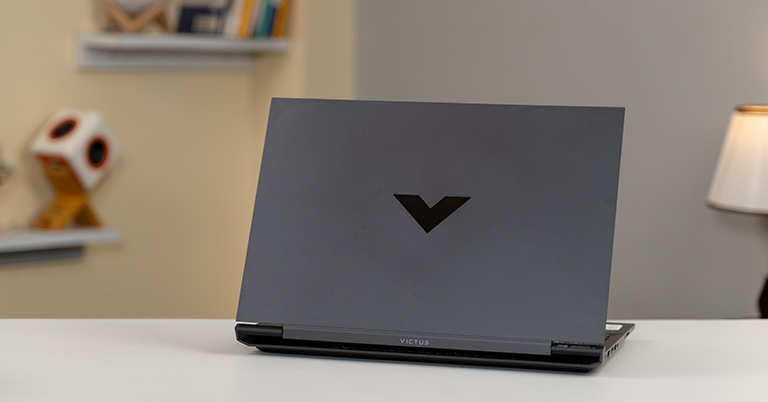
HP embarked on the quest for affordable gaming laptops in 2021 with an entirely new series called Victus. The new lineup replaces the budget-level Pavilion machines and sits below the company’s hardcore Omen gaming laptops. Packed with a big 16-inch screen and a bunch of different configuration options, the Victus is aimed to strike a blend between affordability and performance. So, we’ll see if HP is truly capable of accomplishing that with the new HP Victus 16 in this review.
HP Victus 16 Specifications:
- Design & Build: All-plastic body, 14.57 x 10.24 x 0.93-inches, 2.46 kg
- Color Options: Mica Silver, Performance Blue, White
- Display: 16.1″ anti-glare IPS panel, 60Hz refresh rate, 250 nits brightness
- Resolution: FHD (1920 x 1080) resolution, 16:9 aspect ratio
- Keyboard: Full-size white backlit keyboard
- Trackpad: Plastic multi-touch trackpad, Windows Precision drivers
- Security: TPM 2.0 chip, No fingerprint sensor
- Processor: AMD Ryzen 5 5600H (Zen 3), 6C/12T, 3.3GHz Max Turbo Frequency, 16MB L3 Cache, 7nm FinFET process, 45W TDP
- RAM: 8GB DDR4
- Storage: 256GB PCIe NVMe M.2 SSD
- Graphics: AMD Radeon RX 5500M
- Audio: Dual speakers, Audio by B&O
- Battery: 70 Watt-hours
- Power Supply: 150W Smart AC power adapter
- Webcam: 720p HD camera, No physical shutter, Dual-array microphones
- Connectivity: WiFi 6, Bluetooth 5.2
- I/O Ports: 1x HDMI 2.1 (4K@120Hz), 1x USB-A 3.2 Gen 1, 1x USB-C 3.2 Gen 1 port, 1x 3.5mm audio jack, 1x RJ-45 (LAN), 1x SD card, 2x USB 3.2 Type-A
- Price in Nepal: Rs. 125,000
HP Victus 16 Review
Design
When I first lifted the Victus 16 out of its box, it felt a bit hefty, and the scale doesn’t lie—it weighs 2.46kg. It achieves this with an all-plastic body and will make its presence felt in your backpack.
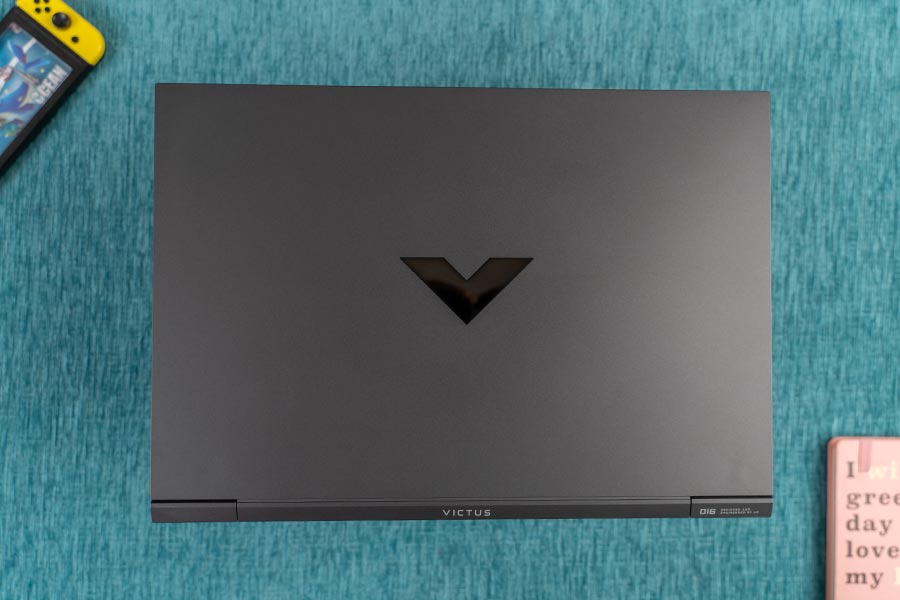
Now, as Victus is a new series in HP’s portfolio, I anticipated a fresh design for the device. However, HP has played it safe here by delivering a design that is comparable to their Omen gaming machines. What’s rather intriguing is, even the Victus logo is claimed to be taken from the bottom half of the Omen’s diamond design. “It’s six of one, half a dozen of another”, huh, HP?
Anyways, the unit that I’ve for the review has an all-black finish that goes by the name Mica Silver. Frankly, this model looks pretty generic, but the blue and white color variants are more visually appealing—at least in pictures.
The limitations
Despite the plastic build, the keyboard deck feels pretty solid here—no flex or anything of that sort.
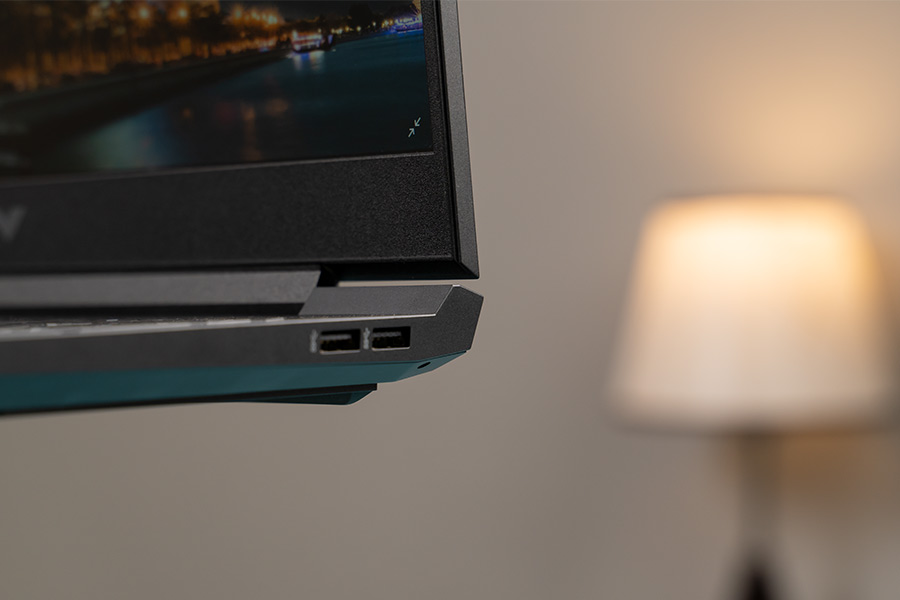
However, what drags you down is the flimsy screen hinge. Here, even a slight tug with the laptop or typing with a heavy hand causes unusual wobbles in the lid. And, you’ll find flex if you grasp the screen corners as well. So, the durability of this machine, in the long run, is something to be wary about.
Furthermore, the sharp edges issues that plagued HP Omen 15 are present here too. As a result, long working sessions would leave you with pain-in-the-arm and press-marks around the wrist.
Regardless, the laptop has a decent selection of ports. On the left, there’s an HDMI 2.1 port that supports 4K@120Hz, USB-A 3.2 Gen 1, USB-C 3.2 Gen 1 port, a 3.5mm audio jack, an ethernet, and an SD card slot. Likewise, you get two more USB 3.2 Type-A ports on the right. Although not present here, a Thunderbolt 4 port has really complemented this setup.
Display
Moving on to the display, the Victus hosts a big 16.1-inch FHD IPS screen. You can get it with up to 165Hz refresh rate, however, the unit I have boasts just 60Hz. As most budget gaming laptops these days feature a higher refresh rate, I wish HP have followed the suit and included at least 120Hz smoothness in Victus’ entry-level machines. Or, if the brand accompanied this large panel with a 16:10 aspect ratio, I could…. make do with a normal refresh rate monitor. But we’re missing out on both.
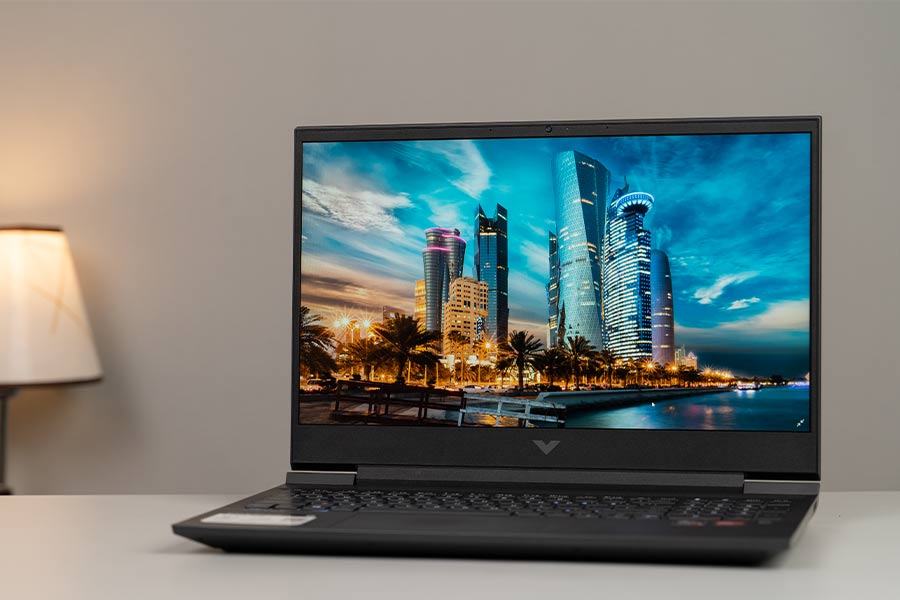
Furthermore, it’s an anti-glare screen with a peak brightness of 250 nits. With that number, it’s easy to assume it’s not intended for outdoor usage. The colors on the indoors are sufficiently bright, and its FHD resolution has yielded no trouble regarding content sharpness either. Viewing angles are great too with a notable dip in brightness when looking from sides.
Keyboard
On to the keyboards, the Victus brings a full-size keyboard with a dedicated Numpad. The keys here are really easy to get accustomed to—they are well-spaced and offer subtle feedback that I enjoyed using. And, thanks to the sturdy keyboard deck that further contributes to a comfortable typing experience.
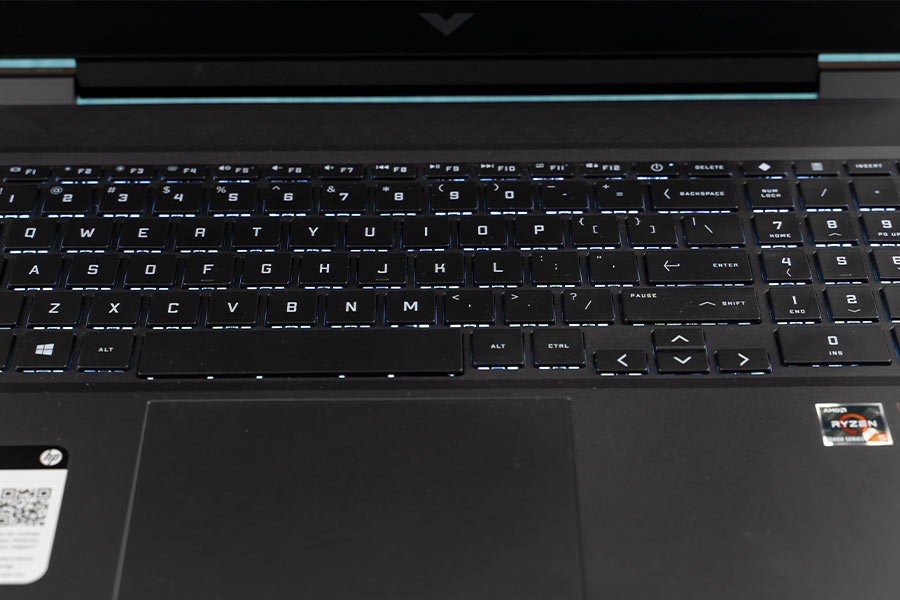
I played a couple of typing games to put the keyboard through its paces and I was easily able to get about 70 words per minute on average. Here, the keyboard only has single-stage white backlighting, though. Yet, it offers adequate contrast to maintain sight in dimly lit environments.
Moreover, you’ll find a dedicated key to launch Omen Gaming Hub software on the top row. The app lets you customize the cooling modes of the device while you may also explore other parameters like system monitor and network traffic optimizer.
Trackpad
While its keyboard is really good, its trackpad is fine for a budget gaming laptop. It’s made of plastic and has left and right buttons. The multi-gesture function works well, however, I would have liked it if the integrated buttons provided better tactile feedback.
Audio
Moving on, the dual-speaker setup of this laptop is okay-ish as well. As expected, these are down-firing units and bags Bang & Olufsen-tuned audio systems. They offer a fair degree of clarity in vocals, but you won’t find boomy bass to satisfy your bass heads.
Performance
Let’s now talk about its performance. My unit of the HP Victus 16 is powered by a Hexa-core Ryzen 5 5600H mobile processor paired with AMD Radeon RX 5500M GPU, 8GB of DDR4 RAM, and 256GB of PCIe NVMe M.2 SSD storage.
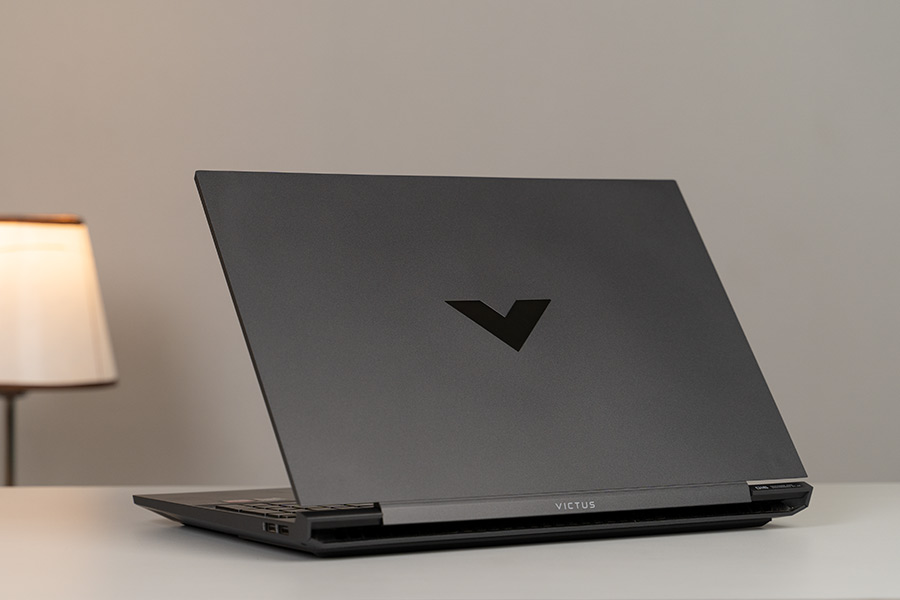
This specific model sells for Rs. 125,000 in Nepal, Rs. 60,000 in India, and some $860 in the US. Aside from that, you can also purchase it with Intel 11th gen i5 and i7 / AMD Ryzen 5 and 7 series processors and up to Nvidia Geforce RTX 3060 graphics. These models also provide a higher refresh rate, a better response time, and, in some cases, low blue light certification as well. So as any sane person would, I suggest you pay the extra premium and get those high-specced variants—particularly if you are eyeing it for gaming.
Benchmarks
Anyways, the laptop can handle your day-to-day chores with ease. As a writer, I always had 10-20 tabs open in the browser, and apps like photoshop, and Spotify use their chunk of memory in the background. And with all this, it still doesn’t break a sweat and I’ve had no issues multitasking either.
CrystalDiskMark
| Read (MB/s) | Write (MB/s) | |
| SEQ1M Q8T1 | 2878.74 | 1803.10 |
| SEQ1M Q1T1 | 1934.74 | 2175.61 |
| RND4K Q32T1 | 413.96 | 262.93 |
| RNK4K Q1T1 | 47.14 | 107.39 |
Cinebench R23
| CPU: Multi-Core | 9163 |
| CPU: Single Core | 1366 |
| MP Ratio | 6.71x |
Geekbench 5
| CPU: Single Core | 1371 |
| CPU: Multi-Core | 6392 |
| Compute (OpenCL) | 39597 |
Unigine Heaven
(FPS: 86, Score: 2380, Min FPS: 10, Max FPS: 141)
| API: OpenGL | Multi-monitor: Disabled |
| Quality: High | Anti-aliasing: x2 |
| Tessellation: Extreme | Fullscreen: Yes |
| Stereo 3D: Disabled | Resolution: System |
Blender (CPU)
| bmw27 | 4m20s |
| classroom | 9m46s |
| fishy_cat | 5m44s |
| koro | 7m30s |
| pavillon_barcelona | 10m4s |
| victor | 18m27s |
- Time taken lower is better
Performance Modes
Under the Omen gaming hub app, you can choose from two different performance modes—Quite and Default, while deciding between Max or Auto fan profiles. For the most part, I used the laptop in Default mode with the fan profile set to Auto. However, when gaming or running benchmarks, I set the fan profile to Max for the best results.
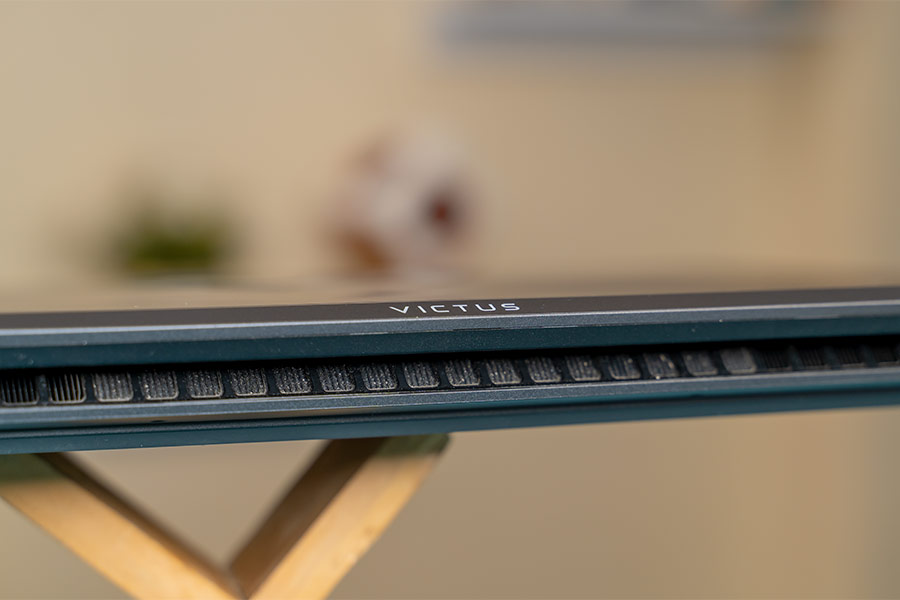
Coming from a Nitro 5 whose fan speed blows like a whistle, I’ve to say its fan noise is tolerable even at its highest setting. For cooling, it has air intake vents on the bottom and blasts hot air from the side and rear vents.
Gaming
Getting into games, GPU-intensive titles like Cyberpunk gives around 13-16 fps on high settings, while in medium settings you get around 20-25fps. With those figures, it’s easy to anticipate that the gameplay isn’t smooth and you’ll encounter stutters now and then. Likewise, Control gives 30-35fps on the high settings, and GTA is playable at its highest settings with 46-50fps. Valorant, on the other hand, achieves 110-120fps at its highest settings. However, with the 60Hz screen onboard, I did notice multiple instances of screen tearing.
| 1080p Gaming Benchmarks | ||
| Performance mode, Max thermal control | ||
| Game | Settings | Average FPS |
| Cyberpunk 2077 | Texture quality: High | 13-16fps |
| Texture quality: Medium | 20-25fps | |
| Control | Texture resolution: Medium | 30-35fps |
| GTA V | Texture Quality: Very High | 45-50fps |
| Reflection Quality: Ultra | ||
| CS: GO | Texture Detail: High | 80-90fps |
| Anti-Aliasing: 8X MSAA | ||
| Valorant | Texture Quality: High | 110-120fps |
The Victus is rather good in terms of thermals. After an hour or two of gameplay, the middle area of the keyboard deck gets slightly warm. But, it does not become finger-fryingly hot even after such extended playtime.
Battery
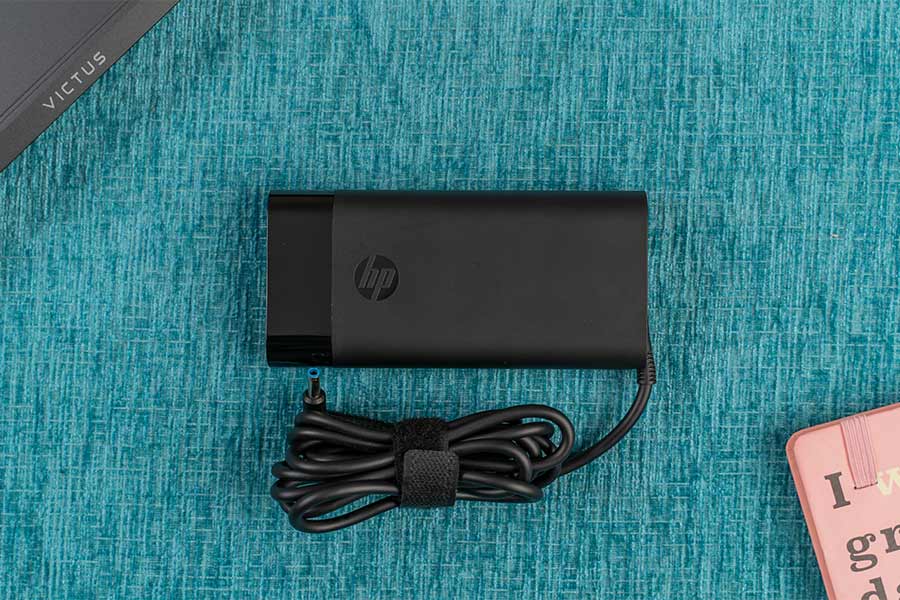
Moving on, the Victus 16 gets its fuel via a 70Whr cell. As is the case with most gaming laptops, the battery life in this thing lasts about 3 hours. Thus, you must have the AC adaptor handy at all times.
HP Victus 16 Review: Conclusion
Wrapping up the review, HP Victus 16 turns out to be a decent gaming laptop. You can play demanding games even at the highest of the setting, and it stays relatively cooler after long gaming sessions. Furthermore, its minimalistic design allows its use as a dual-duty laptop and will not attract undue attention from the audience.
However, the major letdown here is the weak screen hinge and a pretty standard 60Hz refresh rate screen. While HP needs to do extra homework to fix the lid issue, I wish the base variant of HP Victus 16 at least had a 120Hz refresh rate. As a result, if you want a greater refresh rate at a comparable price and specs, the Acer Nitro 5 is your best bet for now. Still, if you’re a professional looking for a powerful workstation with an elegant design that also handles casual gaming, the HP Victus is a good pick.
HP Victus 16 Review: Pros & Cons
Pros:
- Minimalistic design
- Big 16.1-inch screen
- Fairly good keyboard
- Great 1080p gaming performance
- A fairly effective cooling solution
Cons:
- Mediocre plastic build, wobbly screen hinge
- 60Hz refresh rate
- No Thunderbolt 4 port
- Battery life could’ve been better











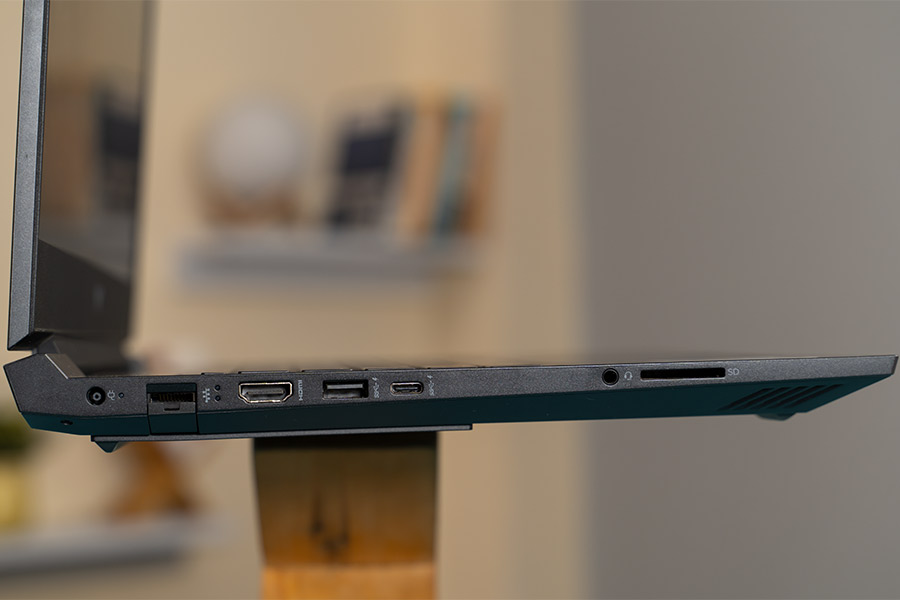
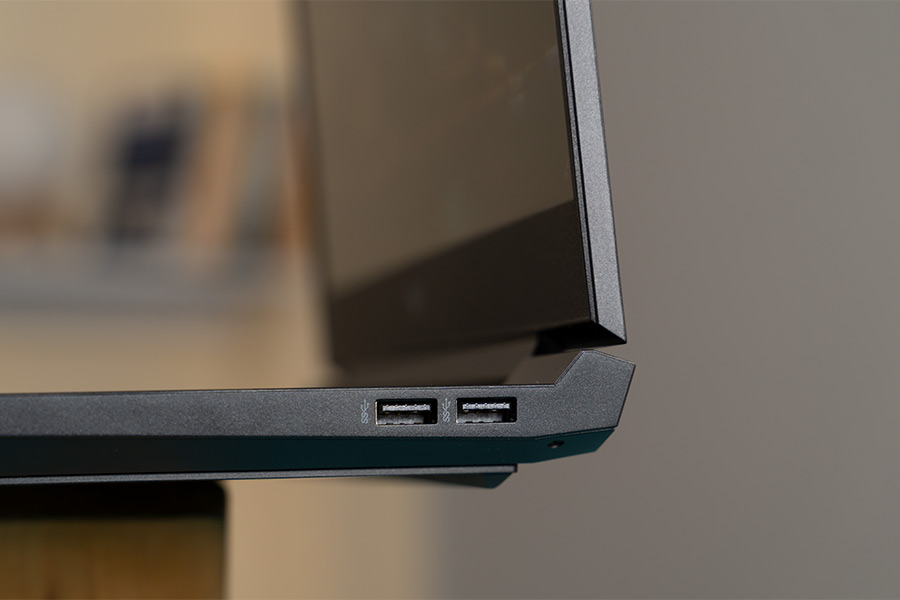

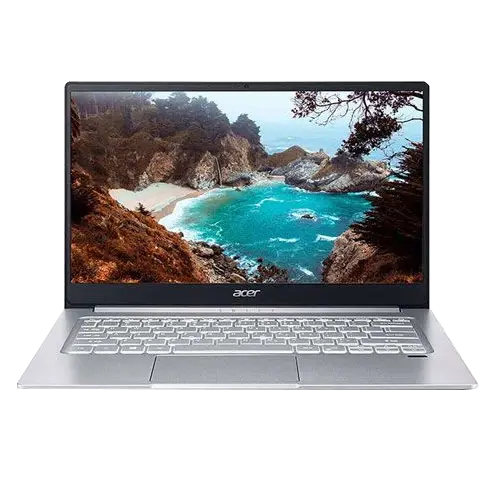
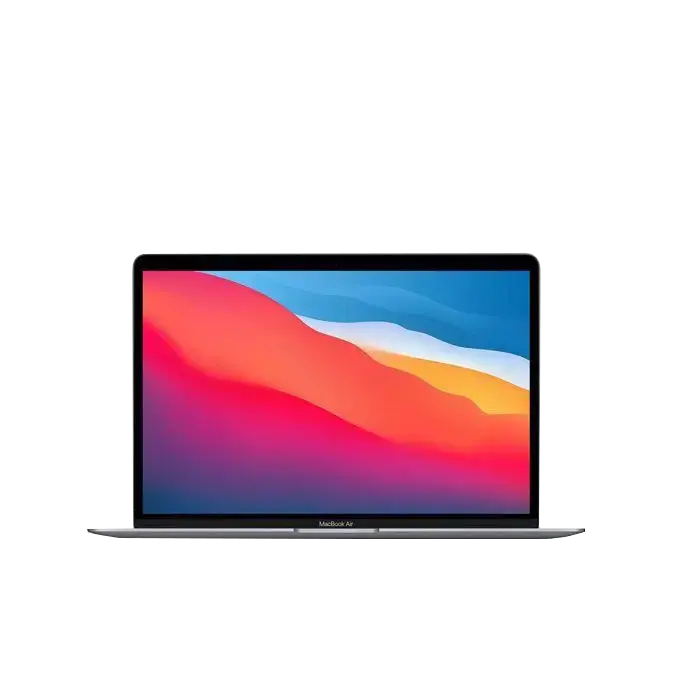
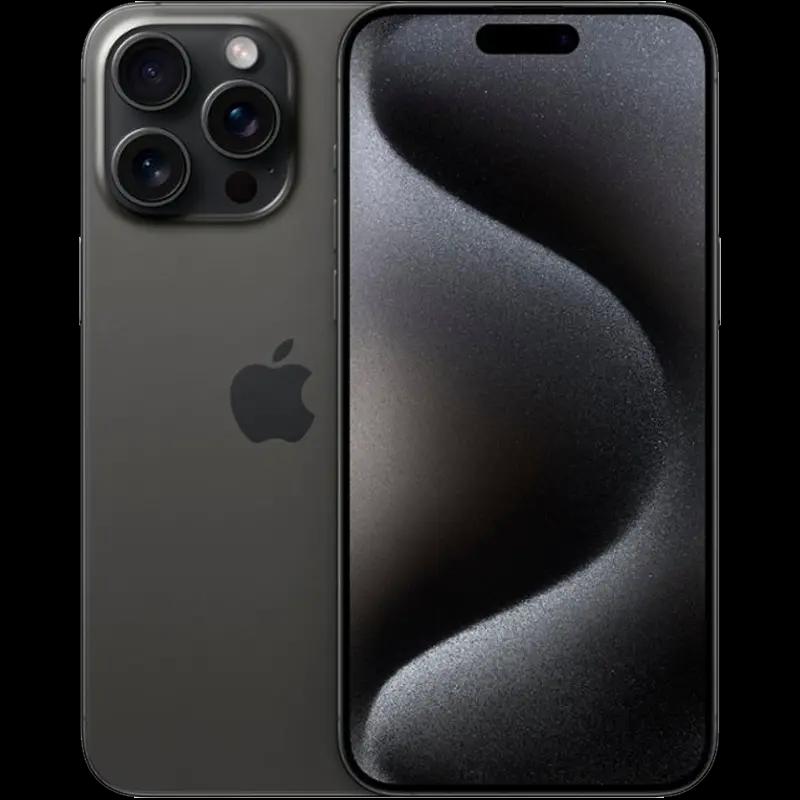

![Best Ultrabooks To Buy in Nepal 2024 [Updated] Best Ultrabook Laptops in Nepal 2023 - June Update](https://cdn.gadgetbytenepal.com/wp-content/uploads/2023/04/Best-Ultrabook-Laptops-in-Nepal-2023-June-Update.jpg)
![Best Gaming Laptops in Nepal 2024 [Updated] Best Gaming Laptops in Nepal 2023 - June Update](https://cdn.gadgetbytenepal.com/wp-content/uploads/2023/04/Best-Gaming-Laptops-in-Nepal-2023-June-Update.jpg)
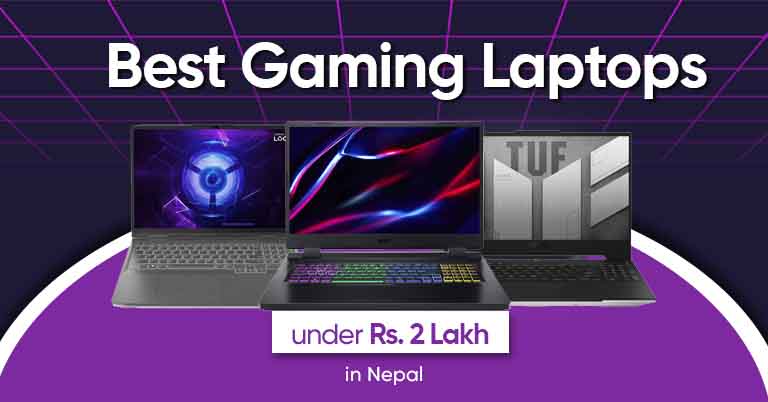
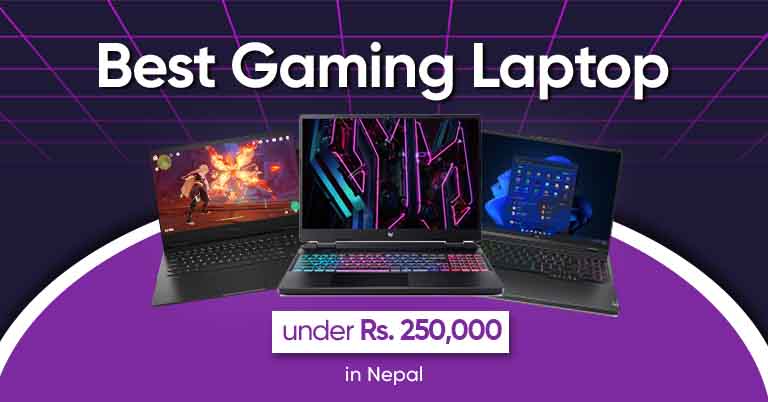
![Best Mobile Phones Under Rs. 15,000 in Nepal [Updated] Best Phones Under 15000 in Nepal 2024 Budget Smartphones Cheap Affordable](https://cdn.gadgetbytenepal.com/wp-content/uploads/2024/03/Best-Phones-Under-15000-in-Nepal-2024.jpg)
![Best Mobile Phones Under Rs. 20,000 in Nepal [Updated] Best Mobile Phones Under NPR 20000 in Nepal 2023 Updated Samsung Xiaomi Redmi POCO Realme Narzo Benco](https://cdn.gadgetbytenepal.com/wp-content/uploads/2024/01/Best-Phones-Under-20000-in-Nepal-2024.jpg)
![Best Mobile Phones Under Rs. 30,000 in Nepal [Updated]](https://cdn.gadgetbytenepal.com/wp-content/uploads/2023/12/Best-Phones-Under-30000-in-Nepal-2024.jpg)
![Best Mobile Phones Under Rs. 40,000 in Nepal [Updated] Best Phones Under 40000 in Nepal 2024 Smartphones Mobile Midrange](https://cdn.gadgetbytenepal.com/wp-content/uploads/2024/02/Best-Phones-Under-40000-in-Nepal-2024.jpg)
![Best Mobile Phones Under Rs. 50,000 in Nepal [Updated] Best Phones Under 50000 in Nepal 2024 Smartphones Midrange](https://cdn.gadgetbytenepal.com/wp-content/uploads/2024/02/Best-Phones-Under-50000-in-Nepal-2024.jpg)
![Best Flagship Smartphones To Buy In Nepal [Updated] Best Smartphones in Nepal 2024 Flagship Premium Samsung Apple iPhone Xiaomi OnePlus Honor](https://cdn.gadgetbytenepal.com/wp-content/uploads/2023/09/Best-Smartphones-in-Nepal-2024.jpg)